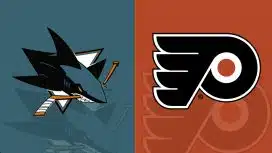(Kate Frese/Sports Talk Philly)
By Kevin Fortier, Sports Talk Philly staff writer
Coming into the 2016-17 season, Flyers coach Dave Hakstol said one game situation he wanted to improve upon was special teams. Last season, at this time, the Flyers were struggling on both the power play and the penalty kill as the first month of the season came to an end.
The power play had a percentage barely peaking out of the teens. On the penalty kill, the Flyers picked up where they finished the prior season, with a percentage of successful kills hovering around 75 percent.
While the numbers haven't changed much yet, the Flyers are slowly showing signs of improvement in both special teams departments as the season's first month comes to a close.
The call-up of Shayne Gostisbehere last season provided the much needed spark to ignite the power play. His creativity, versatility and lethal point shot helped to quarterback the team to finish 10th in the league for the season.
The penalty kill never got that same needed improvement however. The Flyers ended the year 22nd. That was an improvement year to year from finishing 27th the season before, but not up to Hakstol’s expectations.
The Flyers began this season going 0-for-6 combined on the power play against Los Angeles and Arizona. They then scored twice against Chicago in a losing effort. They went 2-for-12 in the next three games before exploding for three goals on four chances against Buffalo on Tuesday.
Prior to the Buffalo game, their power play was converting at 18 percent. Their effort against the Sabres propelled them to 27 percent and fifth overall in the NHL. For a short time, Hakstol replaced Gostisbehere on the top power play unit with Mark Streit. He has since returned Ghost to the top unit.
The Flyers are currently at 22nd overall on the penalty kill, killing 73 percent of short handed situations. The penalty kill has been a struggle for the Flyers for several years now. They just cannot seem to find the right combinations of penalty killers to really make a substantial improvement in this area of the game.
For the past three seasons, the top penalty killing pair for the Flyers have put on the ice has been Pierre-Edouard Bellemare and Chris VandeVelde. Hakstol seems to continue to have confidence in the pair.
For the first time in his career, Wayne Simmonds has seen time on the penalty kill this season. Boyd Gordon was signed specifically for his penalty killing ability and face-off prowess. Russian rookie Roman Lyubimov has also seen time on the penalty kill for the Flyers and been a fit with that grouping.
Hakstol has been rotating defensemen on the penalty kill, trying to find the right combination. The only blueliner who does not typically see the ice against the man-advantage is Gostisbehere.
Philadelphia began the season going 7-for-8 on the penalty kill for the first two games. However, they gave up two power-play goals on three opportunities to Chicago in the third game of the season and have given up four goals while shorthanded in the last three games, including two against Buffalo on Tuesday.
Since going 7-for-8 on the penalty kill to start the season, the Flyers have given up six goals in 18 opportunities for a 67 percent success rate.
If the Flyers wish to become a perennial contender they will definitely have to improve their penalty killing success at least getting it the conversion rate for the opposition into the mid-to-low teens.
Thursday night, the Flyers replayed the Coyotes, this time at home. Arizona was 0-for-3 on the power play, while the Flyers converted on 2-of-8 power play chances.
Their updated power play success rate dropped to 26.5 percent while they improved their penalty killing success rate went to 76 percent, a continued step in the right direction.







